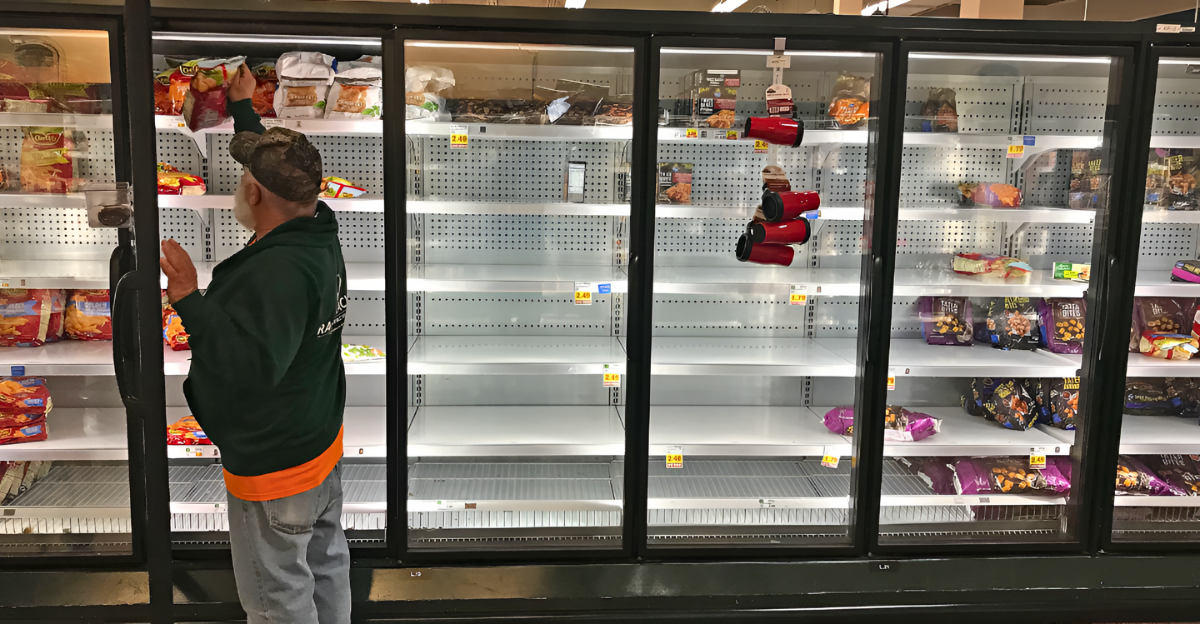
In July 2025, the U.S. Food and Drug Administration announced a nationwide ban on Member’s Mark Freeze Dried Fruit sold at Sam’s Club, citing the risk of Listeria monocytogenes contamination. For Sam’s Club members, the recall struck a familiar brand that was trusted for everyday staples.
The FDA’s move marked a significant moment in food safety oversight, showing how quickly regulators act to protect shoppers. Industry experts told CBS News that recent recalls reflect heightened scrutiny, and consumers are encouraged to pay attention to alerts as supply chains face closer monitoring.
What Triggered the Ban
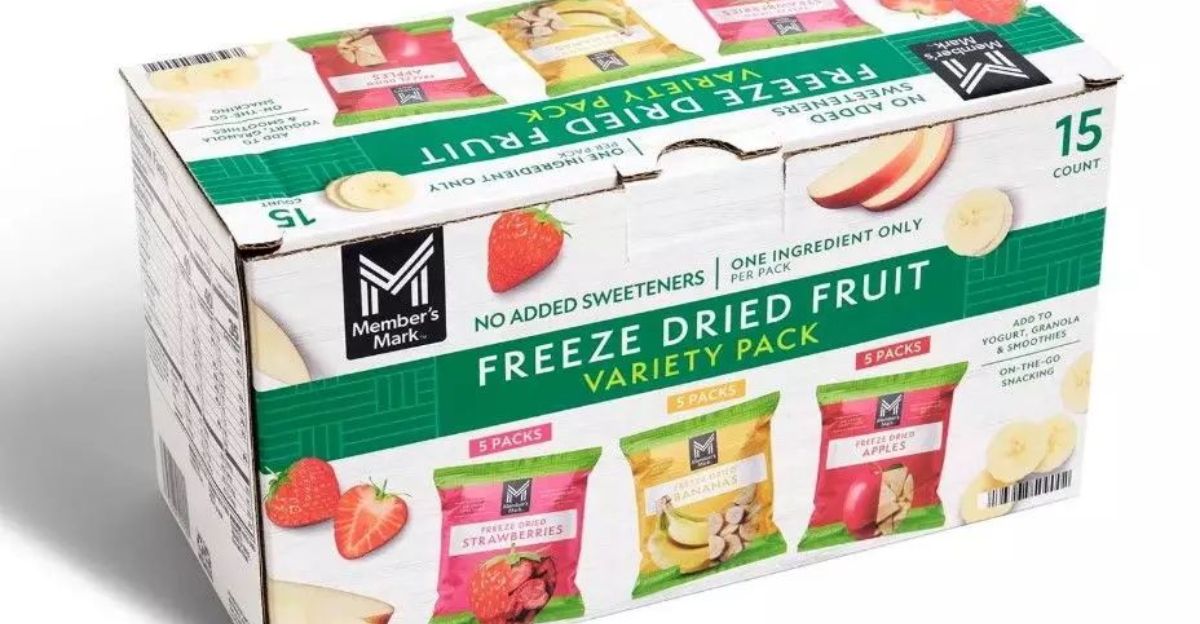
The recall was prompted when the manufacturer of Doehler Dry Ingredient Solutions, LLC, discovered traces of Listeria monocytogenes during internal testing. The tests flagged possible contamination in Member’s Mark Freeze Dried Fruit Variety Pack boxes sold at Sam’s Club. “This recall is being made with the knowledge of the Food and Drug Administration,” Doehler said in its official statement.
This acknowledgment signaled regulatory coordination and transparency. For many households, the announcement raised questions about how contamination occurs in processed fruit and what safeguards exist to prevent unsafe products from reaching store shelves.
Affected Products Detailed
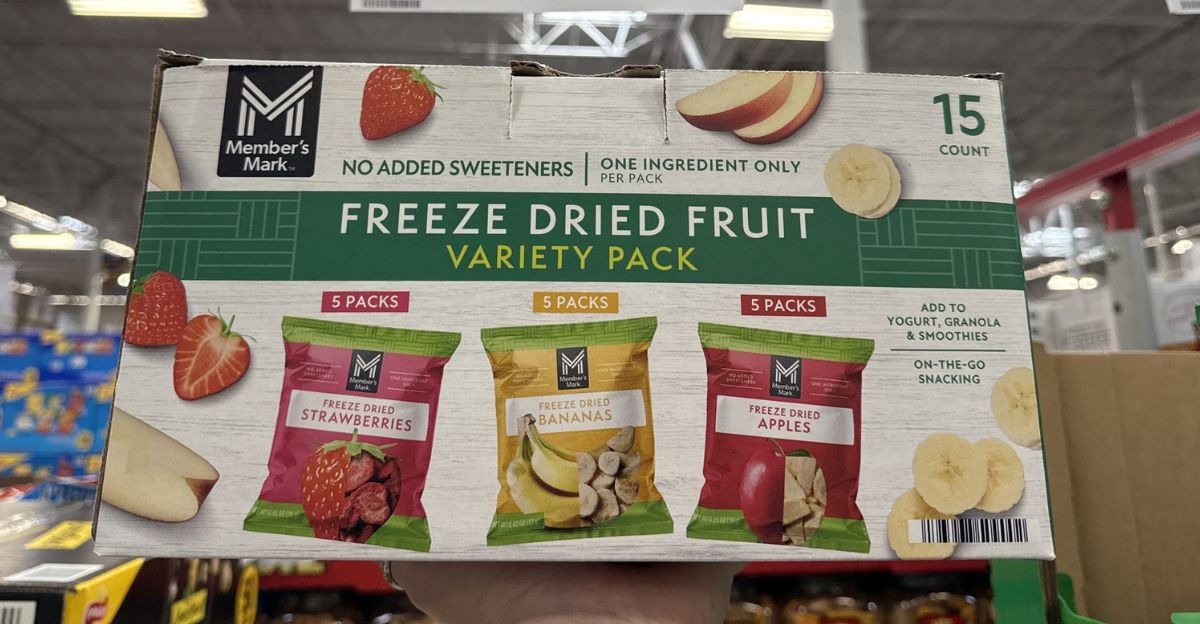
The FDA’s official bulletin listed 15-count Member’s Mark Freeze Dried Fruit boxes with UPC 1 93968 50900 2 as affected. Each box contained individually packaged servings of apples, bananas, and strawberries. The FDA also published lot numbers and expiration dates to help shoppers confirm whether their purchase was at risk.
The detailed documentation reflects how modern recalls provide clear identification markers so consumers can take action quickly. The advice for shoppers who may have stored the boxes in their pantry was straightforward: immediately check labels and lot codes to prevent exposure.
Scope: States and Territories Covered

According to the FDA, the recalled products were distributed in Sam’s Club locations across 42 states and Puerto Rico between July 1 and July 25, 2025. The broad geographic reach highlights how quickly a contaminated item can spread through national retail networks. Sam’s Club operates more than 600 warehouses nationwide, amplifying the potential consumer impact.
Food safety experts told Reuters that the scale of such recalls demonstrates why national distribution chains require robust oversight. Even one contaminated lot can affect thousands of households, making swift detection and clear communication essential.
Why Listeria Presents Danger

Listeria monocytogenes, the bacterium detected in the recalled fruit, is a serious public health concern. The Centers for Disease Control and Prevention explains that listeriosis primarily affects vulnerable groups, including newborns, older adults, and individuals with weakened immune systems. Pregnant women are especially at risk, as the infection can cause miscarriages or stillbirths.
Unlike many other foodborne pathogens, Listeria can survive and grow at refrigeration temperatures, making it harder to control. This resilience is one reason regulators take any detection seriously. For ordinary consumers, the invisible threat highlights the importance of monitoring recall notices.
Documented Symptoms and Risks

The FDA notes that healthy individuals infected with Listeria may experience flu-like symptoms such as fever, muscle aches, nausea, and diarrhea. More severe cases can lead to meningitis, seizures, or complications affecting balance. For pregnant women, even mild illness can have severe consequences for the fetus.
The CDC reports that about 1,600 cases of listeriosis occur in the United States each year, with hospitalization rates significantly higher than for other foodborne infections. Public health officials stress that while no outbreak was linked to the recalled fruit, awareness of these symptoms remains essential for prevention.
No Illnesses Reported So Far

As of the FDA’s announcement, no illnesses had been reported concerning the recalled Member’s Mark freeze-dried fruit. Doehler and the FDA confirmed that the recall was purely precautionary, triggered by test results rather than consumer illness. Prevention magazine noted that proactive recalls are increasingly common as companies aim to avoid outbreaks before they occur.
While reassuring for shoppers, the lack of reported illness shows the system working as intended, catching contamination early enough to prevent wider harm. Still, officials advised consumers not to take risks by consuming affected products.
Immediate Refunds Offered
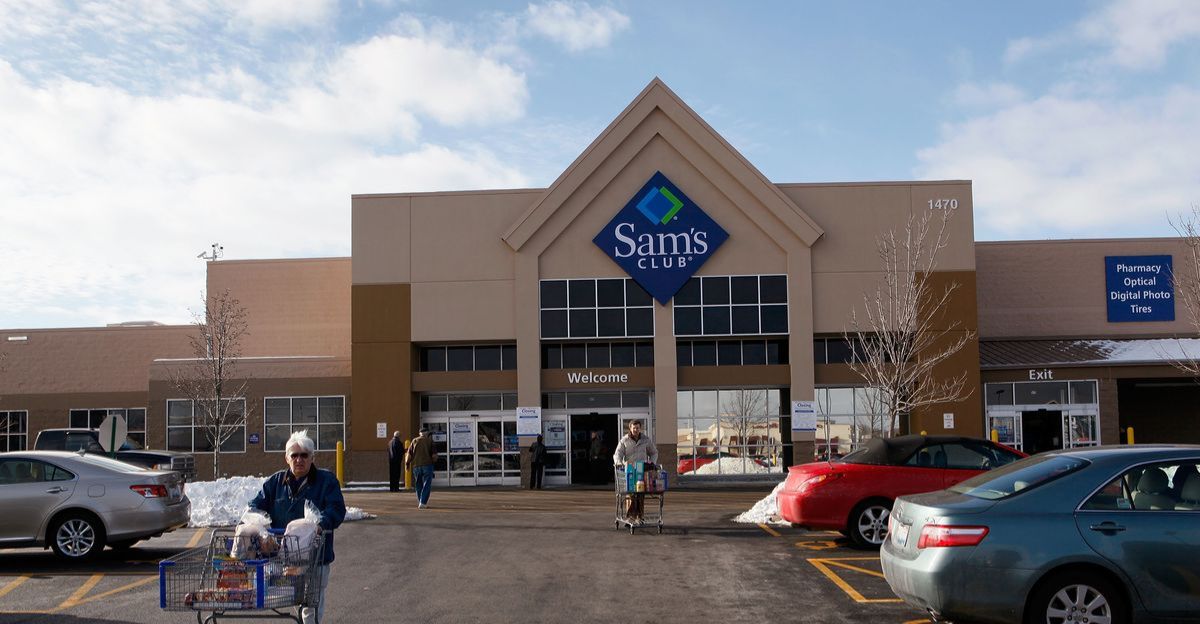
Sam’s Club moved quickly to reassure its members. Consumers who have this product in their possession should not consume the product. They should discard it and may visit any Sam’s Club for a full refund,” the FDA’s recall notice confirmed. Refunds are being honored without receipts to simplify the process for shoppers.
By offering immediate financial remedies, Sam’s Club reinforced consumer trust while aligning with best practices for corporate crisis response. Retail experts told USA Today that swift refunds often help mitigate reputational damage during product recalls, especially for large membership-based retailers.
How to Identify Recalled Boxes

To help shoppers identify affected stock, the FDA advised checking the bottom of Member’s Mark Freeze Dried Fruit boxes for specific lot numbers and expiration dates. Each box comes in a corrugated package containing foil pouches of fruit. The FDA recall notice included photos of the packaging, making identification straightforward.
This visual aid has become standard in recall communication, ensuring consumers do not mistake safe items for unsafe ones. For households with multiple boxes in storage, the guidance was carefully cross-checking each package before discarding potentially affected products.
Manufacturer’s Direct Contact

Consumers with additional questions were encouraged to contact Doehler Dry Ingredient Solutions, LLC directly. The company’s customer service line—770-387-0451—operates Monday through Friday, from 8 a.m. to 5 p.m. EST. Direct communication channels provide clarity for shoppers who are uncertain whether their products are safe.
According to the FDA, manufacturers must maintain consumer hotlines during active recalls. This ensures transparency and accountability while offering a resource for consumers who want answers beyond the general instructions provided in public bulletins and media coverage of the incident.
Regulatory Oversight in Action

In its public statement, Doehler emphasized that the recall was “being made with the knowledge of the Food and Drug Administration,” highlighting the regulatory body’s role. Food safety attorneys told The New York Times that this phrasing is deliberate, highlighting federal oversight and reassuring consumers that regulators are involved in every step of the process.
The FDA’s authority allows it to coordinate recalls, publish detailed notices, and monitor compliance. For consumers, the involvement signals that corrective action is not optional but a matter of public health enforcement.
Why Food Recalls Have Risen

Food recalls in the United States have increased over the past decade, with 2025 continuing the trend. Experts attribute the rise partly to improved detection technologies, including rapid genetic sequencing that can identify pathogens earlier. According to the FDA, greater transparency requirements and stricter reporting standards also mean fewer incidents go unnoticed.
While the higher numbers can sound alarming, public health officials stress that the increase often reflects oversight improvements rather than food safety declines. In short, recalls are a sign that problems are being caught, not ignored.
Sam’s Club’s Food Safety Initiatives
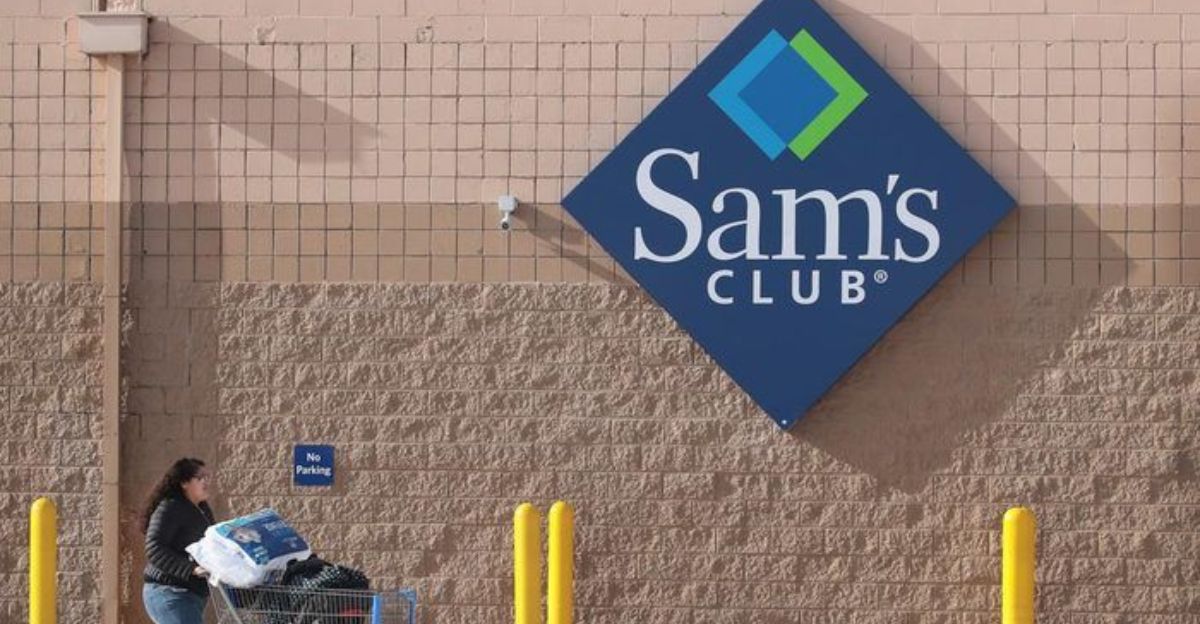
Sam’s Club has sought to strengthen consumer trust through ongoing food safety initiatives. “We prioritize what matters most to members by aligning offerings with evolving dietary preferences and developing products made with simpler, more recognizable ingredients,” the company said in a June 2025 press release.
The retailer has promoted ingredient transparency programs to reassure shoppers that Member’s Mark products undergo strict sourcing and testing. Analysts told CNBC that large retailers are incentivized to maintain strong safety reputations because their business models rely heavily on member loyalty and repeat purchases.
“Made Without” Ingredient Program

One of Sam’s Club’s hallmark initiatives is its “Made Without” program, designed to phase out 40 artificial or potentially harmful ingredients across Member’s Mark products. By June 2025, the company had achieved 96% of its goal by removing synthetic dyes, preservatives, and flavor enhancers. The effort reflects broader consumer demand for cleaner labels and fewer additives.
Retail analysts noted that while such programs do not eliminate contamination risks like Listeria, they demonstrate a broader corporate commitment to food quality. The initiative reinforces Sam’s Club’s reputation as a trusted food provider for many members.
The Recall’s Consumer Impact

Member’s Mark Freeze Dried Fruit was more than a snack for many families—it was a lunchbox staple and pantry favorite. Its sudden absence illustrates how recalls can disrupt everyday routines, particularly when they affect widely distributed products. Newsweek and Prevention reported that shoppers increasingly face changes in product availability as regulatory actions intensify.
While most consumers accept recalls as a safety measure, the inconvenience still highlights the balance retailers must strike between speed, transparency, and trust. For Sam’s Club, the recall is both a challenge and an opportunity to reinforce consumer confidence.
The Role of Internal Testing

The recall highlights the importance of internal testing by food manufacturers. According to the FDA announcement, Doehler identified the contamination “via internal testing of their products. “Such measures are a crucial first defense, often catching issues before they leave the factory.
Food safety specialists told CBS News that voluntary internal checks are becoming more widespread as companies aim to prevent regulatory penalties and protect brand reputation. These efforts often remain invisible for consumers, but the Member’s Mark recall demonstrates how behind-the-scenes vigilance is critical in preventing outbreaks.
National Awareness Campaigns

Once the recall was announced, multiple outlets amplified the message, including FDA bulletins, CBS News, and Prevention magazine. Social media platforms also played a role, spreading photos and details to help shoppers identify recalled products.
Public health agencies have invested in more coordinated campaigns to ensure recall notices reach as many people as possible, especially in households where at-risk groups may be present. Analysts note that this level of communication was less common a decade ago. Today, recalls are treated as public education opportunities as much as regulatory interventions.
Trend Toward Safer, Cleaner Food

Consumer demand continues to shape the future of food safety. A 2025 Sam’s Club member survey found that 72% of shoppers are “actively seeking minimally processed foods,” while 90% said they “live or aspire to live a healthier lifestyle.” These figures, highlighted in a company press release, illustrate how buyer preferences align with stricter safety measures.
As shoppers emphasize health and transparency, companies face pressure to ensure ingredient quality and manufacturing safety. The Member’s Mark recall reflects this broader cultural shift toward cleaner, safer, and more accountable food practices.
Lessons from This Ban

Health experts note that the Member’s Mark case offers important lessons for companies and consumers. Prevention magazine advises, “It’s always a good idea to regularly check the FDA’s recall alerts,” highlighting the role of consumer awareness in preventing illness. The incident reinforces the value of robust internal monitoring and swift action for food producers when contamination is found.
While the recall caused disruption, it also demonstrated the effectiveness of coordinated responses. The lesson for shoppers is clear: stay informed, take precautions, and trust that recalls are designed to protect public health.
What Happens Next for Shoppers

With Member’s Mark Freeze Dried Fruit removed from shelves, Sam’s Club has pledged to continue refining its product safety standards. For shoppers, the recall is a reminder that even trusted brands can face setbacks. Food safety experts told Reuters that the FDA’s ban illustrates a new era of faster, more decisive oversight in 2025.
Consumers can expect more frequent updates, more transparent labeling, and stronger corporate accountability. While the recalled fruit may not return soon, the larger outcome is a stronger, safer food system shaped by regulation and consumer demand.